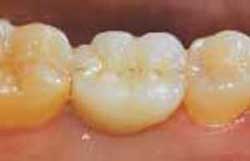Functional Implant Prosthodontic Score of a one-year prospective study on three different connections for single-implant restorations

Published: 14 November 2018
Abstract Views: 1227
PDF: 692
Publisher's note
All claims expressed in this article are solely those of the authors and do not necessarily represent those of their affiliated organizations, or those of the publisher, the editors and the reviewers. Any product that may be evaluated in this article or claim that may be made by its manufacturer is not guaranteed or endorsed by the publisher.
All claims expressed in this article are solely those of the authors and do not necessarily represent those of their affiliated organizations, or those of the publisher, the editors and the reviewers. Any product that may be evaluated in this article or claim that may be made by its manufacturer is not guaranteed or endorsed by the publisher.


 https://doi.org/10.23805/jo.2018.10.04.04
https://doi.org/10.23805/jo.2018.10.04.04







